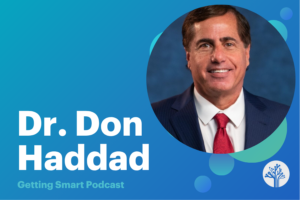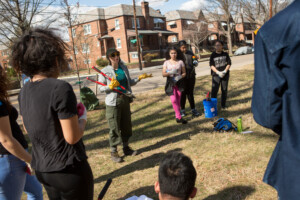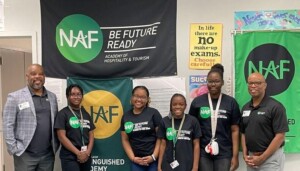The Future of Work Fits Some Employees and Students to a ‘T’

My oldest son calls me every afternoon from Los Angeles, where he is spending the summer working an internship. After the usual questions about family, Timothy shares details from his experiences in a corporate office. Uppermost on his mind are the networks he is building and the skills he is developing.
We both know that he will enter the workforce shortly after his graduation from university next June.
Though we have never stated it in technical terms, we have been trying to turn him into a T-shaped individual. His major is economics; his minor is statistics; his passion is sports. He wants to work in team operations for a professional franchise. Thus, internships with the San Francisco 49ers and the Anaheim Ducks.
The metaphor of T-shaped was first dropped into the public realm in 1991 by David Guest in an editorial he wrote for The Independent. The term took on the force of nature when Tim Brown, CEO of the design firm IDEO, described it as the talent assessment he and his team use to find creatives. Basically, the vertical bar on the T represents the depth of skills and expertise in a single field. The horizontal bar signifies the ability to collaborate across disciplines and to apply knowledge in other areas of expertise. Depth and breadth, fit to a T.
I am especially attracted to Brown’s description of the horizontal component, which he elaborated on in an interview with Chief Executive magazine:
“The horizontal stroke of the ‘T’ is the disposition for collaboration across disciplines. It is composed of two things. First, empathy. It’s important because it allows people to imagine the problem from another perspective—to stand in somebody else’s shoes. Second, they tend to get very enthusiastic about other people’s disciplines, to the point that they may actually start to practice them.”
Philip Gardner, the director of the Collegiate Employment Research Institute at Michigan State University, has written widely on T-shaped skill sets. A few years ago at the Rethinking Success Conference, he described the ideal job candidate as a “liberal arts student with technical skills” or a “business/engineering student with humanities training.” In other words, a T-shaped individual.
Gardner provides a list of complementary skills, including “the ability to work effortlessly with others, the ability to apply knowledge across disciplines, the ability to see from other perspectives, and an understanding of fields outside your area of expertise.” This suite of skills aligns closely with the work that the Partnership for 21st Century Learning has been promoting for two decades. You can now add a T to the 4Cs.
Not to be outdone, a current generation of writers and thinkers have developed frameworks around other career development models. Andrew Wilshere, writing for DesignLab, tells readers “How to Get Hired: Understand If You’re an I, T, or X-Shaped Person.”
An I-shaped person is old school. They have developed expertise and experience in a single area but never learned how to apply those skills (including the complementary skills described by Brown and Gardner) to other domains.
Job candidates who want to climb the ladder and move into management are encouraged to develop X-shaped skill sets. According to Wilshere, “great leaders are rooted in the depth of both their subject knowledge and their professional esteem and credibility. Similarly, they must be able to support diverse teams.”
As you can surmise, the traditional education system does a fabulous job of producing I-shaped talents. And there is a place for such expertise in the future of work. But as the economy pivots toward collaborative work (with humans or AI), the T beckons.
Katharine Brooks, writing for Psychology Today magazine, offers some ideas about T-shaping that we can crib and use to create a self-assessment for students or job candidates seeking to upskill.
You should task/ask yourself and your students to:
- Identify and list core skills. In which field do you have depth of knowledge? How are you able to apply that expertise, and in what settings? What skills and knowledge are you lacking?
- Identify the discipline/field you are focusing on in high school or college. What is your major, concentration or programmatic focus? How does that discipline apply to the job you’re seeking? Why would a person in that job need or value those skills and knowledge?
- Identify the classes/courses you are taking that are interdisciplinary in nature. Where did you learn to apply your knowledge and skills to other fields?
- Reflect on your ability to discuss your area of expertise with individuals who don’t know as much about your field. How do you communicate the key elements of knowledge in your field? Have you studied the vocabulary of other fields to learn how your field interacts?
The current mania over STEM education obscures the need for T-shaped individuals, a topic brilliantly addressed by Marc Tucker in a piece called The ‘T-Shaped Curriculum’: Liberal Arts, Technical Education, or Both? According to Tucker, “While the idea of an education in the liberal arts is widely written off these days, much is made of the need to help our students grow up into adults who are creative and innovative. But what does it take to do that? Experts in creativity like Amabile, Gardner and Sternberg think that one of the major wellsprings of creativity consists of the application of the conceptual framework from one field or discipline to the problems being worked on in another field or discipline…But where does the deep understanding of the concepts and frameworks from these fields come from? The answer, of course, is the kind of understanding that lies at the heart of a sound education in the liberal arts.”
Per the obvious, traditional instruction can do an exemplary job of creating expertise in a single domain. And that includes both the hard sciences as well as the liberal arts. Tradition draws the vertical stroke of the T. To create the horizontal stroke we must evolve instructional practices and course design.
Readers are well aware of my single-minded focus on project-based learning (PBL). I would never avow that all projects must be interdisciplinary, but that certainly is the ideal state. I would never claim that all projects must be collaborative in nature, but that is the ideal state.
PBL-enriched with design thinking would be a superb form of instruction to produce T-shaped individuals. Both provide a collaborative experience focused on interdisciplinary work, but design thinking injects two complementary skills (perspective-taking and empathy) that can propel high-quality PBL into an engine for creating T-shaped individuals. And we need them.
For more, see:
- Getting Started with Design Thinking
- The Development of High-Quality Project-Based Learning
- The Future of Work: How Do We Prepare our Students?
Stay in-the-know with innovations in learning by signing up for the weekly Smart Update.








0 Comments
Leave a Comment
Your email address will not be published. All fields are required.